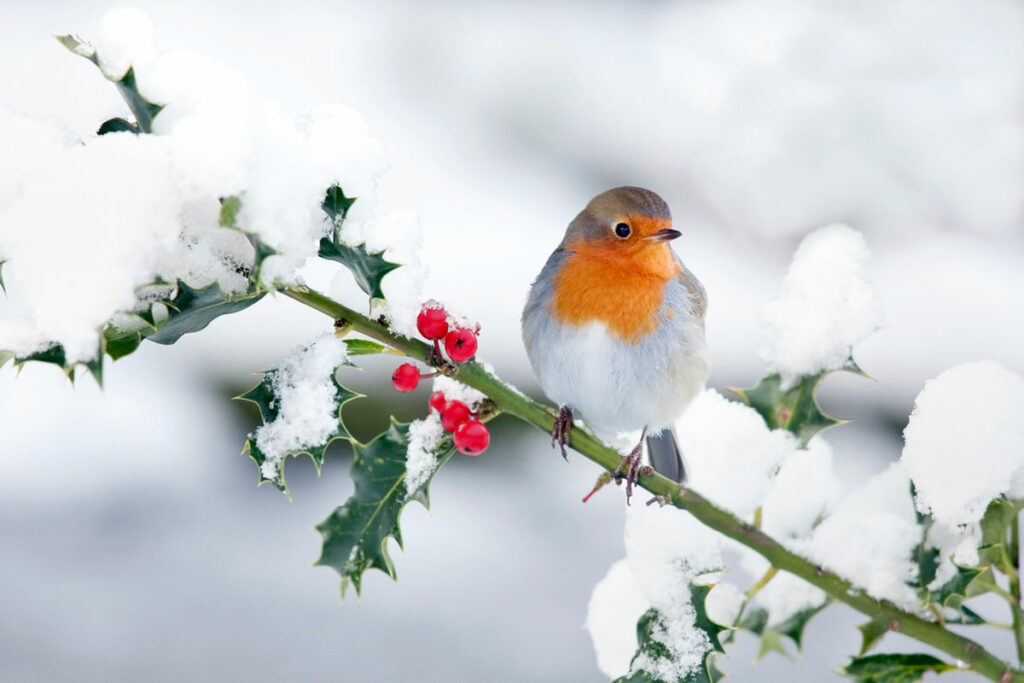Were you looking out of the window while wearing layers upon layers of clothes, watching the birds fluttering around your feeders? You look down toward your feet, knowing you have on fuzzy socks warming your toes inside your boots. You look outside at the birds’ feet; they’re not wearing boots or fuzzy socks. Don’t their feet get cold?
Songbirds' feet do get cold. Yet, like as with many other birds, there are several reasons why they don’t.
For instance, many birds have little fluid in their feet and legs to freeze. Their feet and legs are mainly muscle, tendon, and bone. Another way their legs and feet stay warm is with a countercurrent heat exchange system. Because blood vessels in their legs and feet are close together, the blood vessels leaving the body warm the blood returning to the heart. Thus, creating a circular warming system.
SUNFLOWER HOUSE
Among the fun ideas to consider when you are designing your flower plantings for spring is a sunflower house. You’ll need a flat location that receives full sunlight (minimum 6-8 hours) and is 8 feet across. Choose a shape for the walls: square, circular, triangle, rectangle. You need seeds in which the sunflower is expected to grow 6 feet in height.
Next, draw your shape in the soil. Make sure to leave a space to enter, aka the door, approximately 2 feet wide. Plant your seeds according to directions, generally 6 inches apart and 1 inch deep. For thick walls, plant another row. Stagger your seeds to the ones in your original shape. Water your seeds daily.
Once you have a couple of leaves on your sprouts, place mulch between the stalks to deter weeds. No one wants weeds growing in your house.
Your sunflowers will reach a maximum height in about 10 weeks. You can either bend your sunflowers in with string for a roof or tie string across the top from sunflower to sunflower and let morning glories trail across as your roof. Brightens the day just thinking about a happy place of a sunflower house.
VARIETIES
Last time, we mentioned some spring veggies to plant. Here are varieties to consider that the Texas A&M AgriLife Extension suggests for our areas. AgriLife has other options to explore online, giving you the choice of county and vegetable.
Varieties: artichoke (Green Globe); asparagus (Jersey Gem, Jersey Giant, UC-157, UC-172); beets (Chioggia, Detroit Dark Red, Pacemaker II, Red Ace, Ruby Queen); broccoli (Calabrese, Green Comet, Packman, Premium Crop, Southern Comet); carrot (Imperator 58, Nantes Half Long, Red Core Chantenay); baby carrots (Little Finger, Nelson, Thumbelina); cauliflower (Imperial, Snow Crown, Snowball Y Improved); celery (Florida 683, Summer or Giant Pascal, Utah 52-70); collards (Blue Max, Georgia Southern, Vates); onions bulbs (Armado — long day, Cimarron — intermediate day, Durango — long day, Early Grano 502 — YWR, short day, Red Burgandy — short day, Yellow TX Supersweet 1015 — short day; onion bunching (Evergreen Long White), radish (Cherry Belle, Early Scarlet Globe, Long White Oriental, Sparkler, White Icicle); radish daikon (Misato Rose Red Meat, Myashige; Spinach – Bloomsdale, Melody; Turnips – Royal Globe); turnip greens (All Top), turnip roots and greens (Purple Top White Globe, Shogoin, Tokyo Cross).
Till next time. Keep your souls and soles in your garden! Remember the True Master Gardener: Jesus said, “I am the vine; my Father is the Gardener.” John 15:1
Contact Martelle Luedecke at 512-769-3179 or luedeckephotography@gmail.com. Contact Bill Luedecke at 512-577-1463 or bill@texasland.net.

